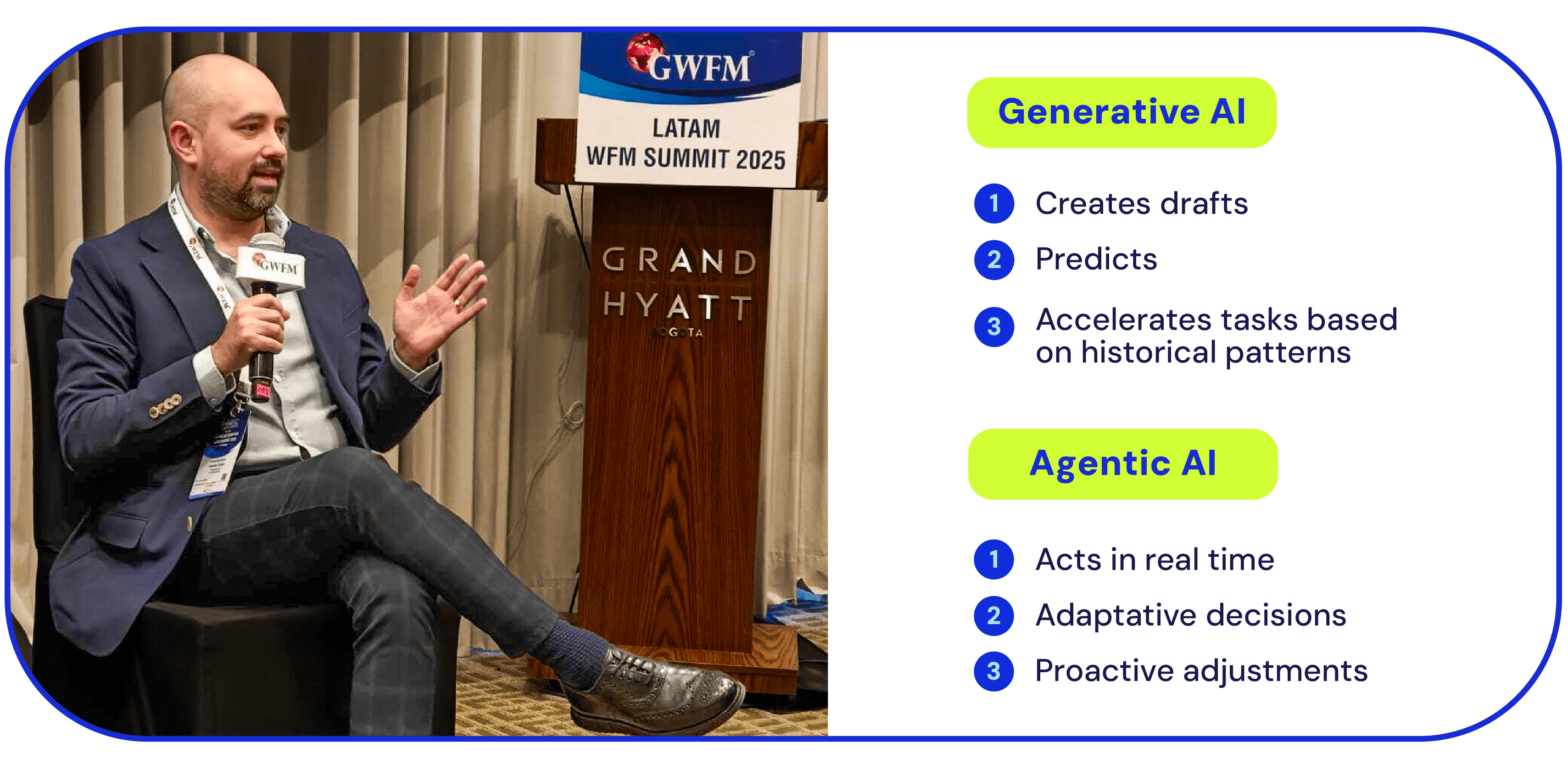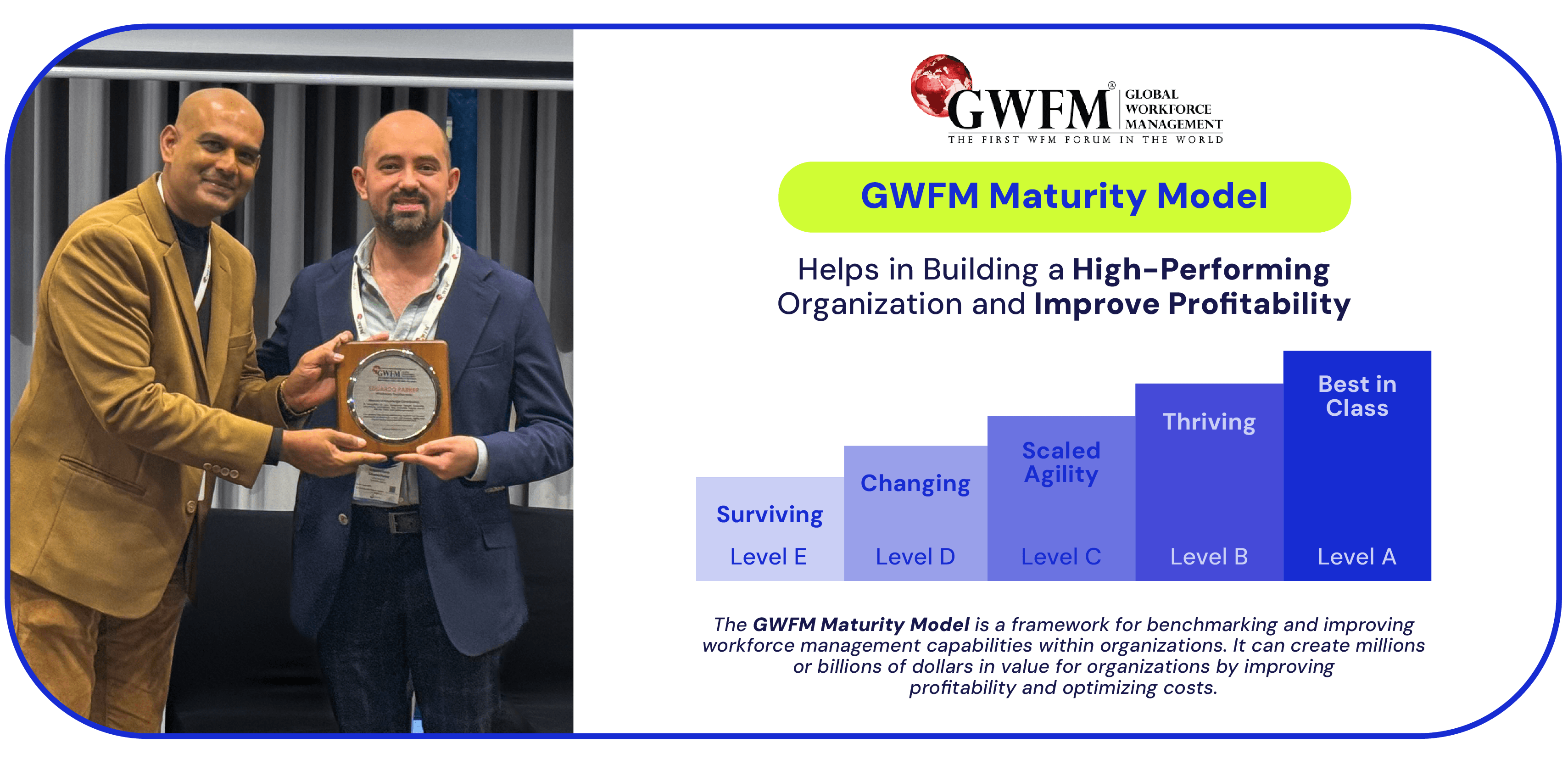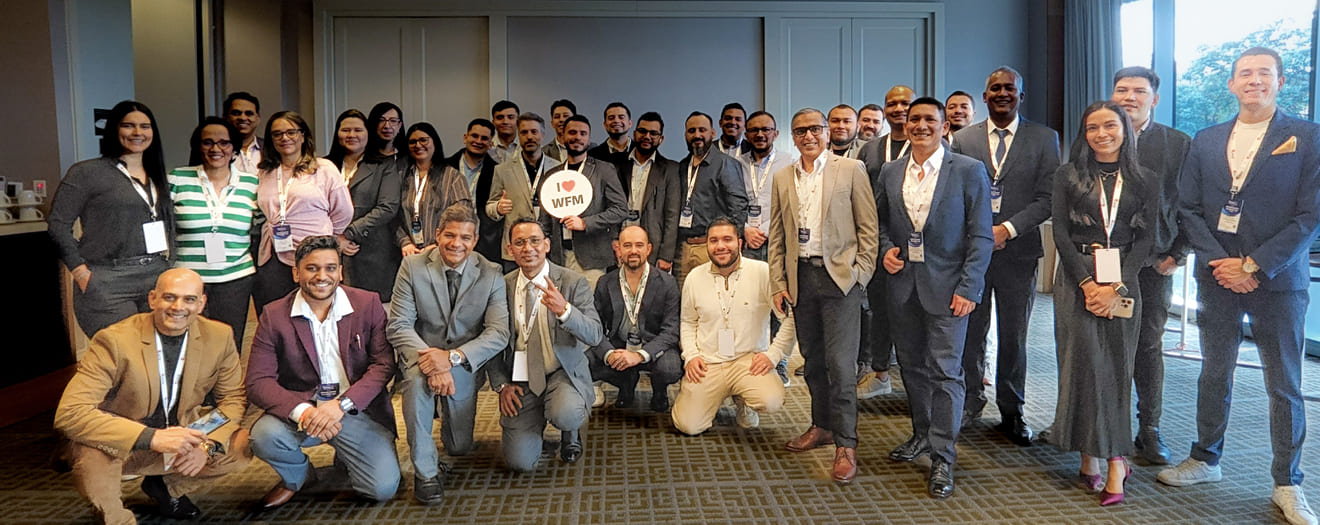Discover how Agentic AI is revolutionizing workforce management with real-time decisions, human-centered innovation, and AI-powered tools like Guru Assist.
The future of Workforce Management (WFM) isn’t just about automation, it’s about balancing technology’s power with human experience. At the LATAM WFM Forum, held in Bogotá, Colombia, on August 22nd, this was the central theme. Below, Eduardo Parker (Workforce Management Director), answers some of the most pressing questions about Agentic AI, its impact on customer experience (CX), and the future of workforce transformation.
1. Setting the Vision
Q: How would you define Agentic AI in workforce transformation, and how is it different from traditional AI? What does “human-centered innovation” mean in tech-driven operations?
A:
Generative AI and Agentic AI both have transformative roles, but they serve different purposes.
- Generative AI creates drafts, predicts, and accelerates tasks based on historical patterns, which is great for efficiency and speed.
- Agentic AI goes a step further. It acts in real time, making adaptive decisions when conditions change, such as handling absenteeism spikes or demand fluctuations.
For WFM, this means schedules that adjust proactively, protecting agent well-being while maintaining service levels. Agentic AI doesn’t just optimize processes, it acts on behalf of people, creating a more supportive and sustainable workplace.

2. AI-Powered Workforce Intelligence
Q: How are organizations leveraging AI to drive more accurate and autonomous planning, and what role does Workforce Intelligence play at the CXO level?
A:
At The Office Gurus, we’ve already integrated AI into our operations with GuruAssist:
- What it does: Real-time prompts during calls, live transcriptions, and automated post-call notes.
- Benefits for agents: Less after-call work, improved accuracy, and lower stress.
- Benefits for clients: 100% call audits instead of 5–10%, unlocking deeper insights and trend analysis.
Our AI-powered tool proves that AI works best when it empowers people while delivering measurable business outcomes. Learn more about GuruAssit here:
3. The Human Element: Experience, Engagement, Empowerment
Q: As AI takes on more decision-making, how do we protect employee well-being, and can you share examples of personalization?
A:
AI reduces repetitive tasks like documentation and manual audits, so employees focus on meaningful work. Examples include:
- AI-enabled IVAs: Pre-collect customer data and route calls accurately, reducing handle time and stress.
- Automated audits: 100% coverage ensures fair, data-rich coaching.
The result? Less burnout, more engagement, and higher job satisfaction.
Learn more about the balance between AI and human agents, and how it improves customer experience:
- AI-Enhanced BPOs: Why the Future Isn’t Agentless, But Agent+
- Balancing AI and Human Agents: The Future of AI in Contact Centers
- Technology and Human Touch: Enhancing Customer Experience
- The Importance & Benefits of AI in Contact Centers
- 5 Reasons Why AI Is Necessary for Customer Experience
4. From Forecasting to Foresight
Q: What trends are emerging in predictive and proactive WFM, and how do you balance automation with oversight?
A:
AI now predicts not just staffing needs but future skills gaps and attrition risks. Like a plane on autopilot, AI handles routine operations, but human judgment is crucial during turbulence.
Automation ensures efficiency, while humans maintain adaptability and trust.
5. Reimagining Talent Models
Q: How is Agentic AI influencing talent models, and what’s your perspective on talent marketplaces?
A:
Agentic AI elevates workforce professionals from back-office roles to strategic partners. They must blend:
- AI fluency to govern and validate systems
- Deep WFM expertise to train AI and prevent blind spots
Like pilots in automated aircraft, WFM leaders remain essential for ethics, oversight, and safety.

6. Risk, Ethics, and Responsible AI
Q: How do we govern bias, transparency, and ethics in AI? How do we protect human agency?
A:
- Explainability matters: Employees deserve clear reasons for scheduling changes.
- Protecting agency: AI should recommend, not decide. Humans remain the final authority.
This partnership builds trust, ensuring that efficiency never overrides fairness.
7. Industry Use Cases & Lessons Learned
Q: What successful use cases have you seen? What pitfalls should leaders watch for?
A:
Success stories at TOG:
- Guru Assist boosts First Call Resolution and consistency.
- Automated transcription cuts after-call work.
- 100% audits enable fair, data-driven coaching.
The Pitfall: AI fails when positioned as a replacement for people. It must augment, not replace.
8. Future Readiness and Roadmaps
Q: What competencies should organizations invest in, and how does the GWFM Maturity Model guide transformation?
A:
Invest in:
- Data literacy for actionable insights
- Change management for adoption
- Empathy-driven leadership to protect culture
The GWFM Maturity Model provides a roadmap, helping companies adopt AI responsibly without losing the human touch.

Wrap-Up
By 2030, we’ll see “super agents”, or humans who partner with AI to deliver empathy-driven CX while training systems for better accuracy.
One KPI to watch: Employee Net Promoter Score (eNPS). When AI makes work easier and more meaningful, engagement rises—and so does customer satisfaction.
Ready to see AI in action? Learn more about how TOG uses GuruAssist to enhance agent experience and customer outcomes.Contact us today and schedule a meeting with our experts.



